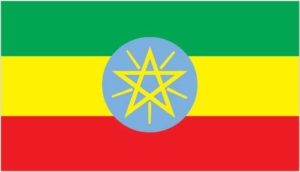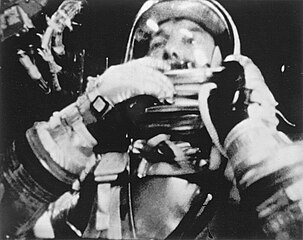Cinco de Mayo is celebrated in Mexico and the United States. The Battle of Puebla took place in 1862. General Ignacio Zaragoza led his Mexican army, outnumbered three to one, against Napoleon III’s French forces. Zaragoza won. Speeches, festivals, and parades are held nationwide. Young children could read Cinco de Mayo by Mary Dodson Wade. Idea: Children could have a Cinco de Mayo celebration. A piñata should be included.

Flag of Ethiopia
Ethiopia celebrates Freedom Day. Also known as Patriots’ Day, the day marks the 1941 end of Italy’s occupation of Ethiopia. Located in eastern Africa, it is the largest land-locked country in the world. The country’s area is a bit less than twice the area of Texas. It has small reserves of gold, copper, potash, and natural gas. Crops include maize, wheat, sorghum, and sweet potatoes, but food insecurity exists. Over 113 million people live in Ethiopia, and Addis Ababa is the capital. Children can learn more at: Ethiopia.
Mary Kies patented in 1809 a straw and silk weaving system. She was the first woman in America granted a patent. Children can read more at: Mary Kies.
Cy Young in 1904 pitched baseball’s first perfect game. A perfect game means the pitcher did not let any opposing player reach first base. Perfect games are very rare. The Cy Young Award for pitching honors him. Children can view a list of Cy Young Award winners at: Cy Young Awards.
Gwendolyn Brooks was the first African American to win the Pulitzer Prize in 1950. Her book of poetry, Annie Allen, described the life of an African American girl growing up during World War II. Older children could read a great article about Brooks and the Pulitzer at: Gwendolyn Brooks.

Alan Shepard aboard Freedom 7
Alan Shepard, aboard Freedom 7, became the first American and the second man to travel in space. The year was 1961. The astronaut traveled about 115 miles into space at 5,000 miles per hour. Children can learn more at: Alan Shepard.